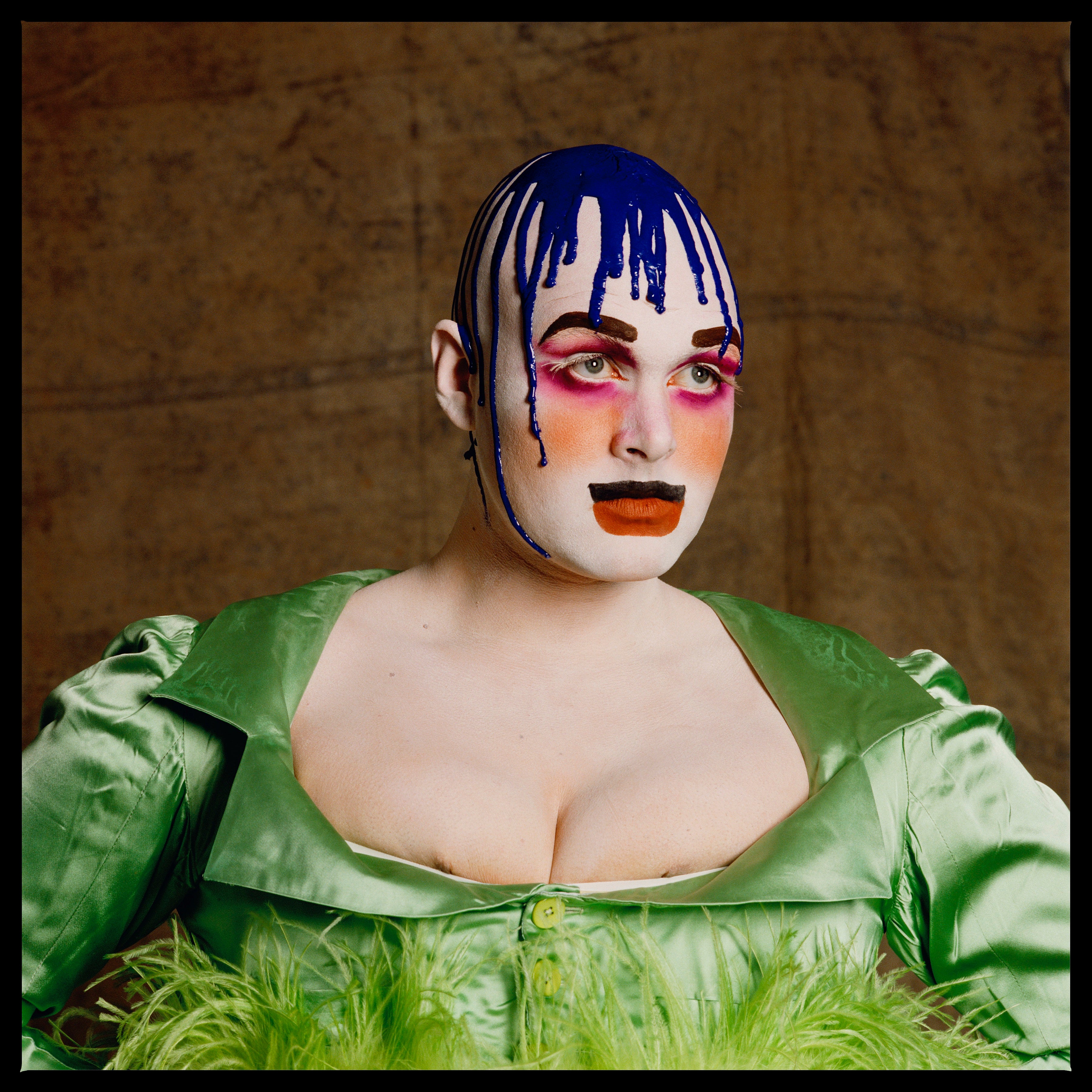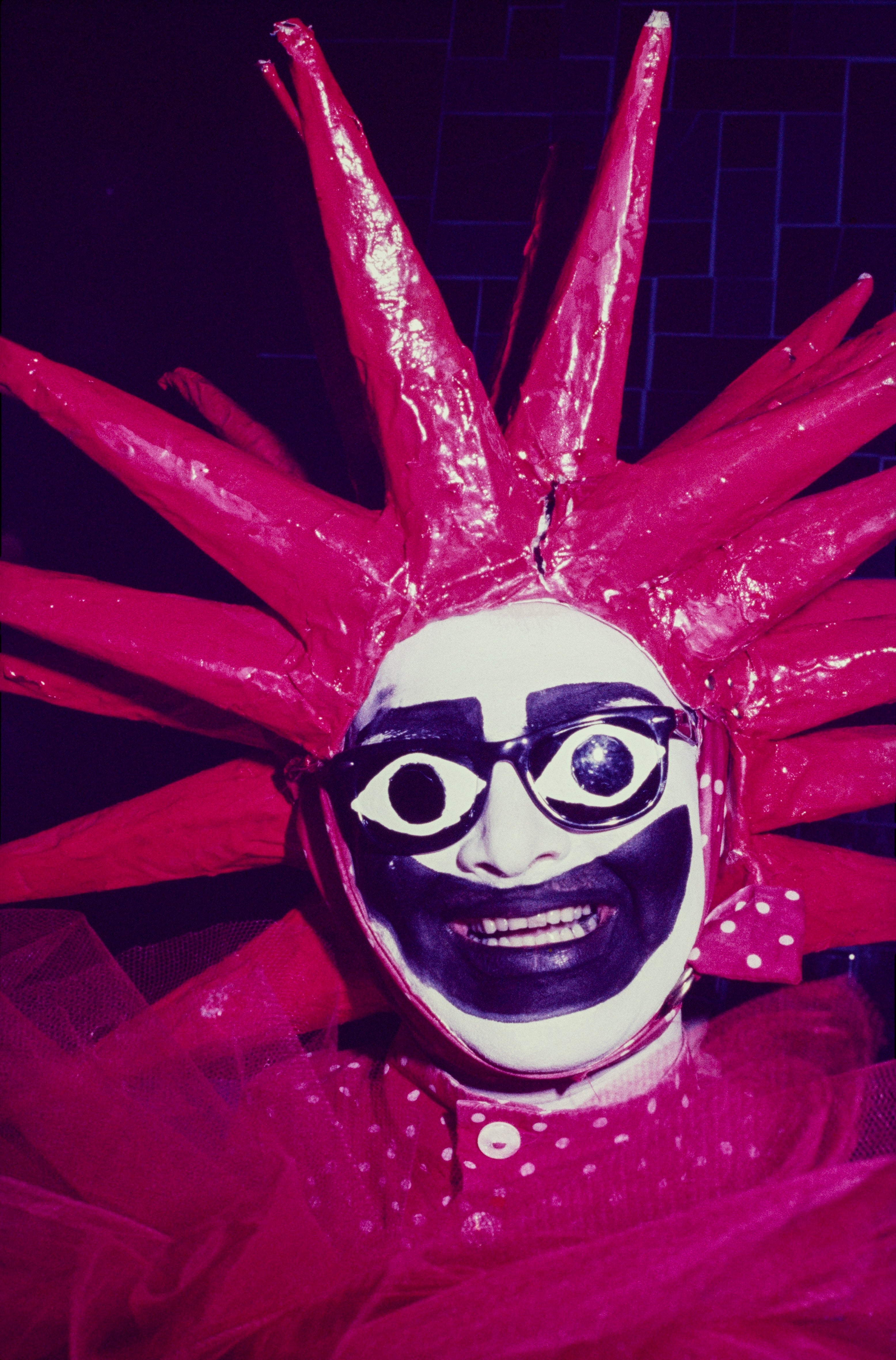Was Leigh Bowery one of the most original artists of the 20th century?
This sometimes amazing show at Tate Modern makes a big claim for the nightlife entrepreneur and performance artist, who was one of the most visible figures of the 1980s

Leigh Bowery was larger than life in all senses: a self-styled performance artist whose exuberantly physical antics took place in nightclubs rather than art galleries; a monstrous egotist who ruthlessly pursued – and achieved – fame as nightlife entrepreneur, fashion designer and musician; and an imposing physical presence, whose shaven-headed, unashamedly fleshy physique is the subject of some of Lucian Freud’s most notable paintings.
This major Tate survey, Leigh Bowery!, is one of a plethora of Eighties-centred exhibitions (including the National Portrait Gallery’s The Face Magazine: Culture Shift and Tate Britain’s The 80s: Photographing Britain) that appear intent on recasting the much-contested Thatcher decade as a time of radical creative experimentation and emergent identity politics.
The Australian-born Bowery, with his penchant for sinister masks and makeup, is presented here as a kind of overbearing ringmaster to alternative Eighties London, in terms that are at once absurdly overinflated and disconcertingly personal. Bowery, we are told, was “one of the most fearless and original artists of the 20th century”. Really? And while you might imagine that a show comprising Bowery’s “outlandish and dazzling” costumes, alongside painting, photography and video, could be wrapped up in a couple of modest-sized rooms, it’s given one of Tate Modern’s very largest spaces.
At the same time, the wall texts invite us to identify with Bowery as a human being – and to take him at his own estimation – in a way you’d expect of the lightest of popular biographies rather than a heavy-hitting retrospective exhibition. “A smalltown boy from Sunshine, a Melbourne suburb in Australia. He’s bored. Inspired by the punk scene, Bowery leaves fashion college and arrives in London in October 1980... It took time for Bowery to find his people.”
Despite this apparently tight personal focus, the fact that many of the works in the first room – and throughout the show – are by Bowery’s friends and associates, rather than Bowery himself, gives the impression of a show that is around Bowery, rather than about him. One example is the cartoon-like painting of our hero (as he’s very much presented) in the bath by his close friend Gary “Trojan” Barnes. Andhe makes a fantastic supporting player in Hail the New Puritan (1986), Charles Atlas’s film about enfant terrible choreographer Michael Clark.There he is, sprawled around his flat in that day’s streetwear, blue pancake makeup inspired by the Hindu god Krishna, face piercings and a “leather man” peaked cap. You don’t get many people walking around London looking like that even now.
Exhibitions revolving around performance and social scenes are often let down by the quality of their documentary evidence; this one is crowded with riotous and marvellously vivid photographs of London nightclubs. Not least among them isBowery’s West End club Taboo, with its entry policy of “dress as though your life depends on it, or don’t bother”.
Whether wearing a sequin-studded motorcycle helmet and leering black-and-white makeup, or carrying fashion designer and DJ Rachel Auburn over his shoulder with illuminated lightbulbs taped to his head with sticking plasters, Bowery is a borderline terrifying proposition. Seen in the exhibition, his outfits are exquisitely made in collaboration with his close friend (and later wife) Nicola Rainbird, with painstaking embroidery and use of sequins. Yet without Bowery’s extravagantly corpulent physical presence, they seem just, well, costumes.
Wall-filling videos of dance performances by Michael Clark reveal new aspects of Bowery’s abilities, as designer and occasional dancer, though the fact that the presiding talent is Clark (the subject of a large exhibition at the Barbican in 2020) dilutes the focus on Bowery. His dedicated artworks, deprived of the self-aggrandising razzamatazz that no doubt accompanied them at the time, often feel a touch half-hearted. Ruined Clothes (1990), photos of some of Bowery and Rainbird’s most lovingly created garments thrown into the street to be trashed by the weather and passers-by, sounds like the ultimate anti-fashion statement. Yet the original clothes, displayed here, look mildly soiled rather than outright ruined.
.jpg)
And it’s disappointing that a section labelled “transgression” boils down to not much more than an argument with Clark over the use of the “C” word.
This exhibition has plenty of amazing material, but it’s so woefully overextended, with too many repetitive videos and too much insignificant ephemera through too many large rooms, that some of the best material almost gets lost. (Bowery’s wacky holiday snaps, for instance, could be anybody’s.) Freud’s now famous oil paintings of Bowery feel a touch inconsequential dropped in among all this stuff, with little in the way of context. More seriously, Bowery’s later fashion designs, wearable surreal sculptures, which genuinely achieve the goal of being works of art in their own right, are seen only in photographs – if brilliant ones – by Fergus Greer.
And some of his most powerful performances are barely documented. The night he sprayed water over the audience from his anus as part of an Aids benefit at Brixton’s Fridge nightclub in 1994is lent poignancy by the fact that he died of the disease himself later that year, though it’s evident here (perhaps unsurprisingly) only through a single photograph.

The show’s climactic and perhaps most extraordinary work, Birth, is a small and tremulous video shot at New York’s drag festival Wigstock in 1993. An alarmingly corpulent Bowery got up in a surreal “female” mask performs a tuneless rendition of The Beatles’ “All You Need Is Love”, before lying down and “giving birth” to Rainbird, who bursts naked from the front of his tights covered in remarkably real-looking “blood”. The show’s aim of showing Bowery as an explorer of “the body as a shape-shifting tool” feels realised here – even if it’s only for about three seconds.
But the show’s most revealing moments are excerpts from the BBC’s mainstream fashion programme The Clothes Show, compered by Bowery in full flowered mask and dress and appearing completely at home. Clearly the master of outrage could charm all the grannies in the world out of the trees when he wanted to.
But then, when you reflect that alongside his immersion in the European avant-garde at its most visceral, Bowery was plugged simultaneously into a tradition of camp outrage that goes back centuries – from, say, the court of Versailles to Kenneth Williams – the fact that he should have been a natural on early evening British television doesn’t seem so surprising.
Leigh Bowery! is at Tate Modern from 27 February until 31 August



Join our commenting forum
Join thought-provoking conversations, follow other Independent readers and see their replies
Comments